Turning Blue Denim Green
Image: Candiani Denim
We all own at least one pair, but jeans are not the durable, hard working garment they once were. Harmful chemicals, water waste and added plastic are just some of the issues the denim industry is facing. We take a look at how the Ellen Macarthur Foundation, along with some hard working, innovative brands are working to turn blue denim green.
Traditionally, jeans were made to last a long time. Originally created by Levi Strauss and Jacob Davis in San Francisco during the Gold Rush, they were stiff and durable but comfortable. Metal rivets were added to allow workers to keep heavy tools in their pockets. Therefore jeans were designed to last for thousands of wears and tens of years. Fast forward to the present day and denim has become yet another victim of fast fashion. New trends and styles emerge constantly meaning we have a lot more choice than just one pair of Levi Blue Jeans. In 2018 the denim market alone was worth $57 billion in the US, and is expected to grow to $60 billion by 2023.
However, with this increase in denim production has come a slew of negative impacts not just on the environment but also for the people making them. With the Ellen MacArthur Foundation recently releasing its new denim production guidelines, the issue of cleaning up denim manufacturing has never been more pressing. We take a look at the new Jeans Redesign guidelines and speak to ‘green’ industry leaders to get the low down on sustainable denim.
Why is producing and wearing denim so bad for the environment?
Denim production has had a lot of bad press recently, and rightly so. Whilst it’s no secret that like growing other cotton products, denim uses a lot of water, additionally, the washing, dyeing and finishing is incredibly energy and water intensive. Not only that but many factories are guilty of simply dumping untreated water back into the environment, turning many previously healthy river systems a suspicious shade of indigo.
Once you have purchased your jeans, further washing at high temperatures during it’s lifecycle is energy intensive. Stretch denim will also shed plastic microfibres in your washing machine. But denim is totally recyclable right? Unfortunately not. Seams and pockets are often made from plastic fibres so need to be removed before recycling. Not only that but the rivets are very difficult to remove resulting in them needing to be cut away. This means that the leg panels are usually the only part of the jeans that are recycled, with the rest heading to landfill. However companies such as Candiani in Italy, Boyish in LA and the Duchess of Sussex’s favourite Aussie brand Outland Denim are working hard to solve these issues.
What does The Jeans Redesign aim to do?
The good news is that The Jeans Redesign guidelines have already been adopted by a large number of well known brands including H&M, Lee, Gap, Reformation, Mud Jeans and new kids on the block Boyish. (read more about the Boyish journey here). But what are these guidelines and how will they help brands create more sustainable denim? The guidelines set out a minimum requirement for brands to meet, based on several points. Currently these include; garment durability, material health, recyclability and traceability. The hope is that these codes will help brands improve already existing methods of denim production and improve the health of the environment as well as garment workers.
Denim is Easy to recycle, and other ‘Blue’ myths
There are two methods of recycling denim; shredding and chemical. The shredding method is self explanatory, the fabric is placed in a machine that shreds it down to it’s fibres. However this method sometimes means that cotton fibres are shortened and so the quality is compromised. Chemical recycling however involves dissolving the jeans down to their fibre molecules. It doesn’t degrade the quality or length of the fibre like shredding can. It’s a process used by Boyish Jeans in Europe with a company called Renewcell. Sustainable denim manufacturer Candiani aim to create a new product from waste like postindustrial fibres to create a brand new yarn. ‘Postindustrial fiber waste is perfect for recycling because we can blend it with other smart materials in order to create a brand-new yarn with an amazing quality,’ Owner Alberto Candiani told us. ‘Quality is always key.’
The family run Candiani mill in Italy takes sustainability seriously and they are often at the forefront of innovative denim design. Regen is their celebratory 80th Anniversary fabric. Comprised of 50% TENCEL x Refibra™ Lyocell and 50% recycled cotton, it means that no virgin cotton has been utilised to make the denim. An incredible feat of water saving compared to regular denim. Alberto is extremely proud of Regen. ‘‘The quality of our spinning waste is good enough to be blended with regenerated Lyocell (Refibra™) in order to achieve a brand-new yarn.’ However creating a sustainable fabric is only part of the battle, next comes the issue of dyes and finishes.
Reducing the use of indigo and hazardous chemicals
Material health is another central pillar of the Jeans Redesign Guidelines. It encompasses the fibres that the denim is created from but also the use of hazardous chemicals, electroplating of hardware and the use of PP (potassium permanganate) and sandblasting. The later exposes workers to silica dusts which can lead to respitory problems and was banned in Turkey in 2009. However it’s something that Claire Ford, Design Lead for Outland Denim believes should be spread worldwide. The brand also use ‘E-flow Machines, which replace normal stone washing using air from the atmosphere transformed into nano bubbles,’ she told us. As a seasoned denim design consultant, Claire is all for sustainable innovation to help her create great denim without the environmental fall out. ‘Outland use laser machines to reduce the use of PP (potassium permanganate) when creating the ‘worn in’ look. In addition to Ozone water free bleaching where you can ‘bleach’ the garment by using ozonated water instead of Sodium Hypo-chloride,’ Claire explains.
Candiani are proud supporters of Greenpeace’s Detox Commitment. ‘We have been running our textile operations in a nature reserve, Parco Del Ticino since 1938.’ Alberto explained. ‘The Detox Commitment is an advocate for industrial improvements, better ingredients and smarter processes, which is what we have always reinforced at Candiani because for us sustainability is not a choice but a way of life,’ he continued. The manufacturer only uses pre reduced indigo and Kitosan which is a natural polymer derived from food waste. It is biodegradable and won’t pollute the water it is used with. It also eliminates the need to mercerize the cotton using caustic soda (a process that increases dye uptake in the fabric and pollutes water).
Unfortunately when it comes to denim production, the list of hazardous chemicals traditionally used is pretty long. Levis became one of the first companies in 2000 to issue a restricted substances list. They have since pledged to reach zero discharge of hazardous chemicals by 2020, in accordance with the ZDHC Foundation. Instead of synthetic indigo which is derived from coal tar and toxic chemicals, Outland Denim use a vegetable indigo dye. Design Lead Claire told us that ‘going forward we are also working on making our dyes using 85% less water then the usual dying process.’
Using less water
Arguably the biggest challenge faced by the denim industry is reducing the amount of water used in production. Not only is water used to grow the cotton, but also to add dyes, fixes and eventually create the end washes. Using less water is one challenge, recycling it is another. ‘Water is precious, we shouldn’t waste it,’ Jordan of Boyish Jeans explained. ‘Our machines use less water, we then recycle it to clean the water so none of the chemicals leave the factory. The water that does leave the factory goes to a water treatment plant which either comes back to us or it goes out depending on which colours are being used.’ He has big goals when it comes to saving water. A passion shared by Levis. In 2018, 67% of Levis products were made with waterless finishing techniques. They have developed over 20 Water<Less® innovations that they believe have the potential to save 50 billion litres of water by 2020. These include the use of Ozone free bleaching and lazers instead of sandblasting.
The Problem with Stretch denim
Like many people, you probably prefer you denim with a little flattering stretch, as opposed to a rigid look. This is achieved by blending cotton with synthetic polyesters like elastane. ‘The problem with polyester is that it is a plastic; and when washed releases micro-plastics into our water,’ Claire told us. ‘My biggest challenge at the moment is trying to remove polyester from jeans.’ As previously mentioned this blending also makes eventual recycling of the cotton tricky. Brands like Boyish favour a rigid approach, no polyester is added to their denim. Founder Jordan instead relies on his extensive industry experience to create the best fit possible. ‘Its when plastics are blended into fibres that you have an issue separating fibres for recycling,’ he explained.
True to form, Candiani weren’t to be stumped by stretch denim. In February 2019 they launched ReLAST, a GOTS certified denim with stretch courtesy of Roica™ a recycled polyester. ‘At Candiani we are not huge fans of synthetics,’ Alberto explained. ‘In general though we keep an eye open to them since bio-synthetics yarns and elastomers can be something interesting in the future as much as recycled or bio-degradable Nylons are now.’ As the ‘Greenest Denim Mill in the Blue World’, Candiani continue to push innovation to find the most sustainable way of producing denim possible.
In Milan, Candiani have opened their first store to showcase the brands that they produce for. ‘The idea is to promote Candiani through our customers and we will soon start educational activations in order to get the public more involved,’ Alberto tells us.
You may have noticed that many of the goals mentioned have completion dates that aren’t so far away. This is because the issue of ‘dirty’ denim needs addressing urgently. The challenges are numerous but solutions are available and already being utilised. The Jeans Redesign project aims to support the brands that have joined in order to get them towards these goals quicker. The first pair of redesigned jeans featuring the Redesign logo will be on sale in 2020. In the meantime we can all do our bit to help. Buy good quality denim, wash them less and repair them to make them last. For more ideas on caring for denim, see our guide.
Disclaimer: The people and models in the images featured are not associated with The Vendeur and do not endorse it or the products shown. This post may contain affiliate links. Prices correct at time of publishing.’
.

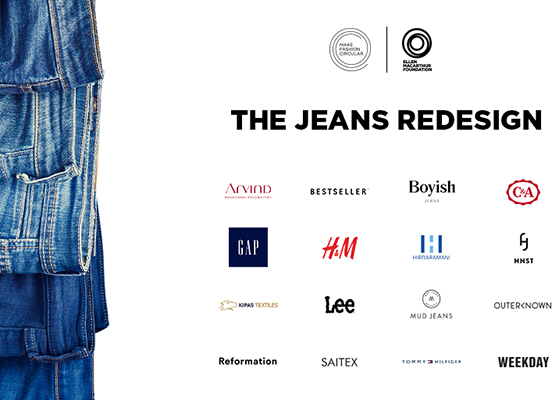
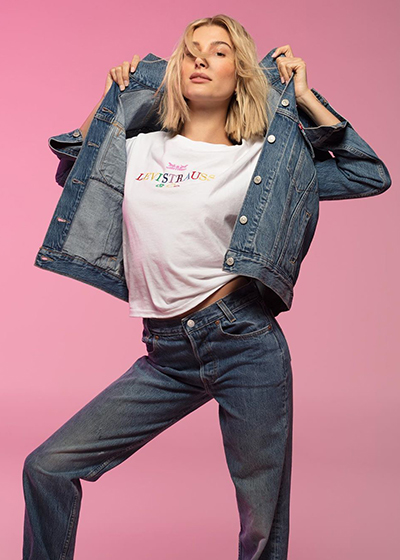
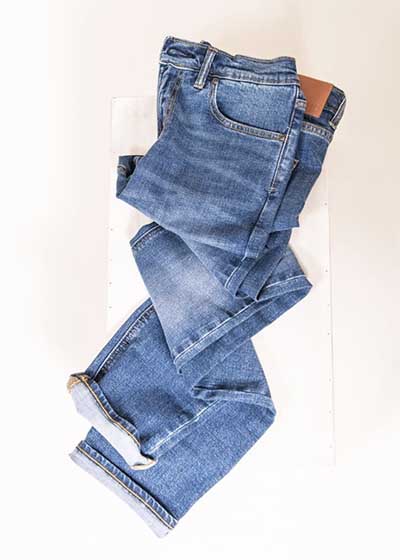
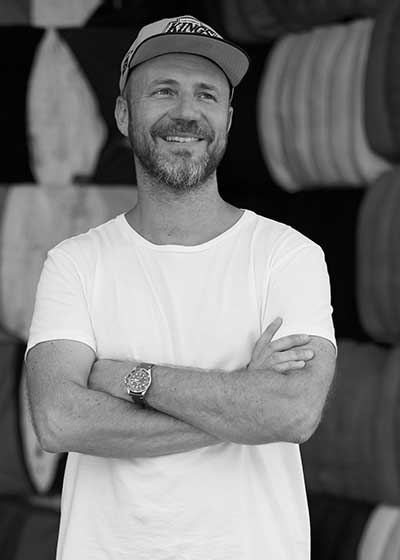
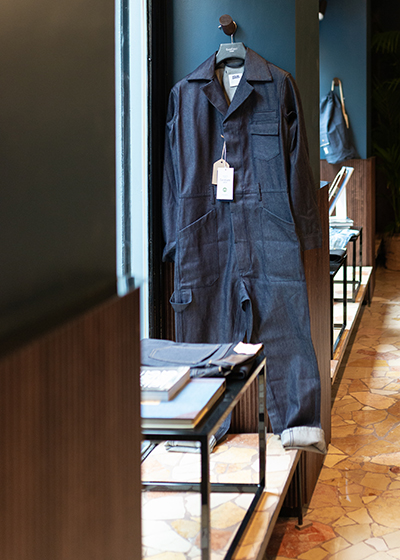






Trackbacks/Pingbacks